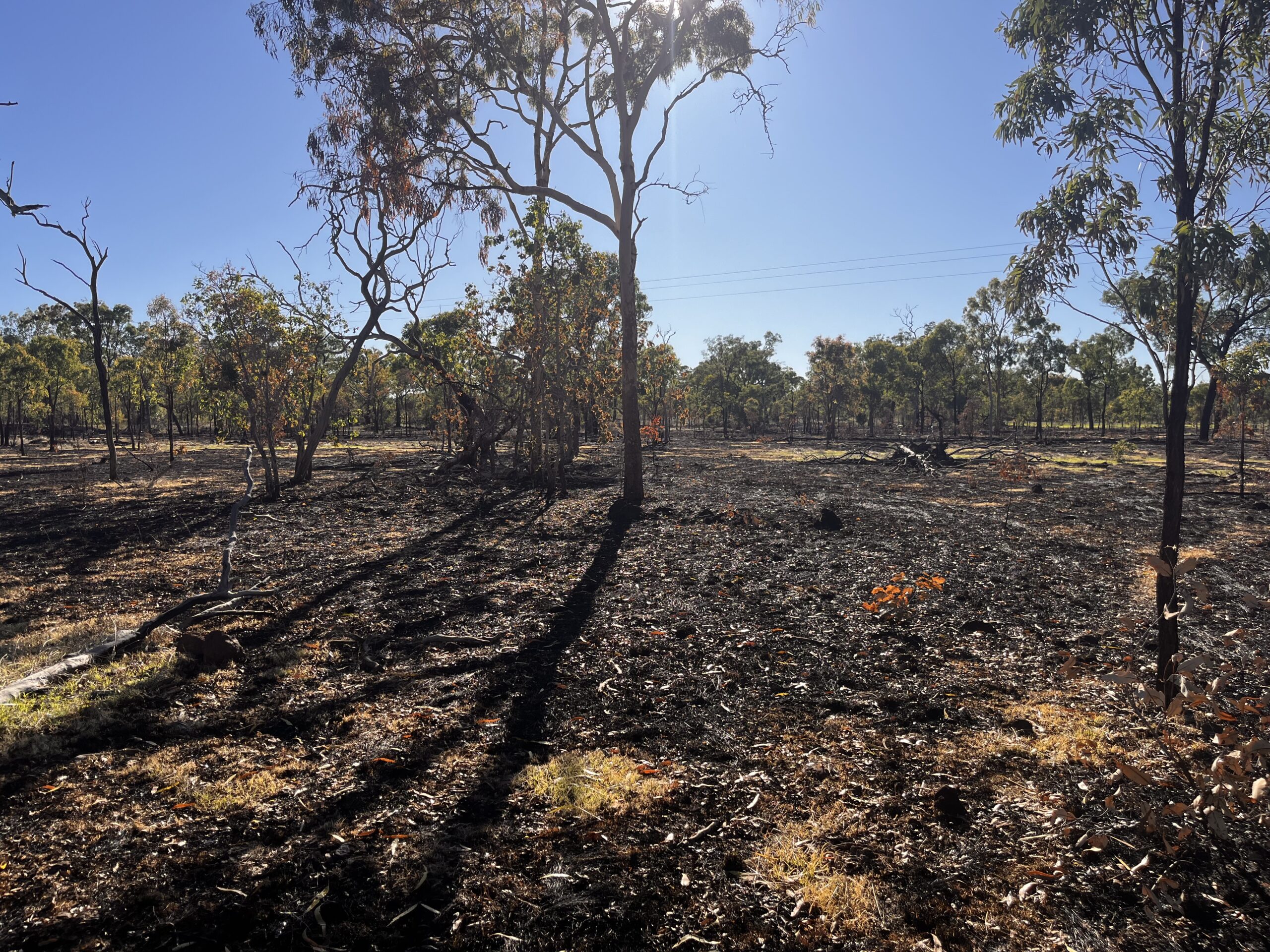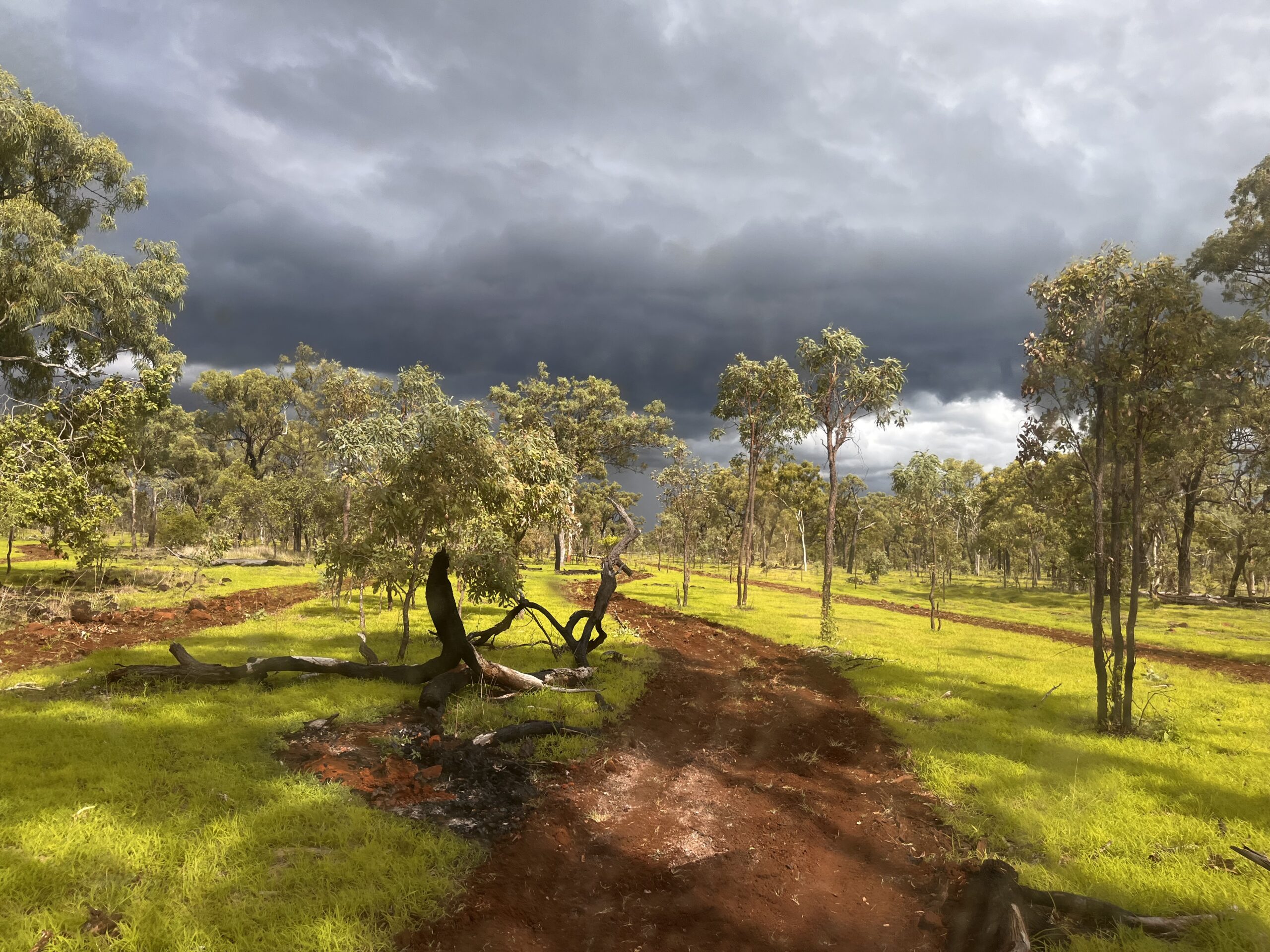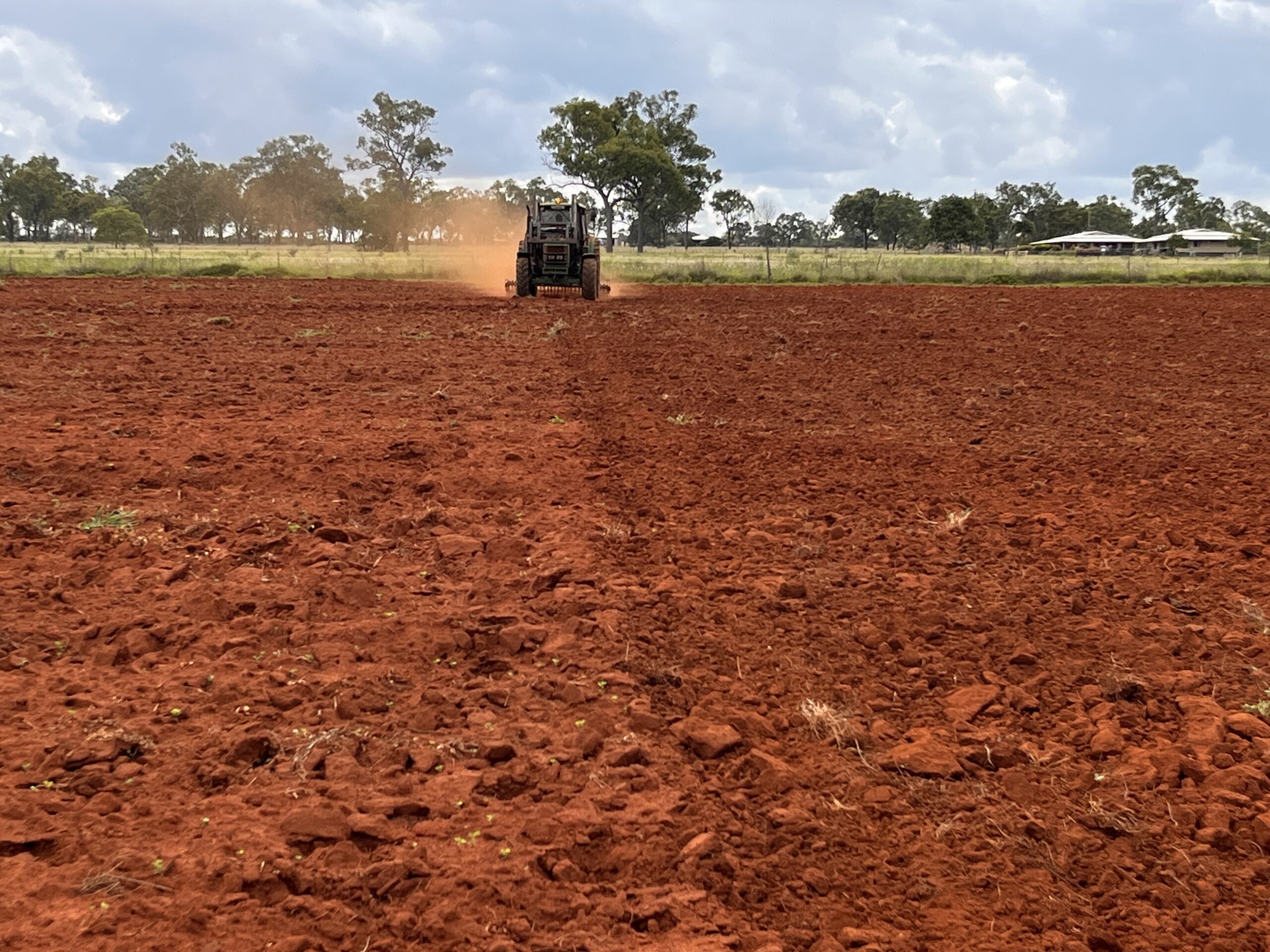Einstein and Darwin on maximising pasture establishment in the seasonally dry tropics
It may not be rocket science, but the reliable establishment of sown pastures in the seasonally dry zone certainly is science. Like any branches of science there are some core principles – failure to observe these results in, well…..failure.


Two serious looking scientists, because establishing tropical pastures is a serious subject!
Albert Einstein once didn’t say (but has been attributed to have said) “Insanity is doing the same thing over and over again and expecting different results.”
Slightly earlier (1859!) Charles Darwin in The Origin of Species’ said “With plants there is a vast destruction of seeds, I believe it is the seedlings which suffer most from germinating in ground already stocked with other plants”.
These are wise words, and in this article the NQ pasture team channels their wisdom by exploring the key principles for successful pasture establishment in north Queensland. It’s as much about what not to do as what to do, and like all branches of science builds on the experience of those who have gone before – in this case our experience in seed management and working with producers.
In this article, we discuss:
Why we sow legumes and sometimes grasses
Scientific principles of establishing new pastures in dry environments
– Stayers or bolters?
– Our plants are ‘wild as’
– Do or die
– Numbers game
– A tough environment for establishment
– Competition
Key principles
- Seeds of tropical pasture plants retain many of their ‘wild’ traits which can delay germination and need special management to ensure timely establishment.
- Living seeds are wonderful biological ‘time capsules’ but they progressively ‘die’ after they mature on their parent plants.
- Tropical pasture seeds are often small and don’t have the energy reserves to emerge when planted too deep.
- There is a short ‘window’ to plant the seeds in the wet season to achieve establishment of seedlings so they can survive the dry season.
- Competition from existing plants (mostly grasses) for light, water and other nutrients severely limits the growth and survival of seedlings.
So, why do we sow legumes and (sometimes) grasses?
Some deep-rooted legumes improve the supply of high quality feed during the early-mid dry season in north Queensland when the volume and quality of native pastures is in decline. Legume leaves are particularly high in protein which helps the ruminant gut to digest carbohydrates from (mostly) grasses. This increases cattle growth rates, enables higher stocking rates and leads to increased grass growth through nitrogen cycling. In some situations, usually in cleared areas, highly productive paddocks can be developed by also sowing grasses which grow further into the dry season and can produce high levels of feed (digestible biomass) compared to native or invasive grass species.
The choice of legumes and grasses for a given situation within a region or climate zone depends mostly on the soil type and grazing management. In general, shrubby legumes like desmanthus and stylos better tolerate more regular grazing (due to less digestible stems) than twining legumes like the atros, butterfly pea and Burgundy bean to name a few. Grasses vary in their palatability and therefore the degree to which they get ‘picked on’ (aka ‘flogged’). These factors all need to be considered when choosing which ones to plant and how to manage them. If you are not sure what the best plants are for your environment get in touch with experienced producers in your area, your advisors (including DPI) or seed company. This is a critical choice, so take the time to get it right.

The scientific principles of establishing legumes and grasses in dry environments
‘Stayers’ or ‘bolters’
Our natural grasslands and sown pastures include plants with a range of ‘strategies’ for survival or dominating others depending on the conditions in which they live. Some are ‘stayers’ – they are long-lived and are less reliant on recruiting new plants from seeds as they can survive for decades provided they aren’t overgrazed and there isn’t a natural calamity (e.g. flooding, disease) to kill off plants. Others are ‘bolters’ – they have short life cycles (sometimes a few months) and rely on producing many seeds to recruit new plants. These are often the ‘colonisers’ after mass death of competing plants. Both ‘strategies’ work in the dry tropics and there is a constant drift between types as the environment and management changes.
Our plants are ‘wild as’
The legumes used for pastures are wild plants with little breeding to select for better seed production or ease of establishment. They are tough and retain features which help them survive and spread in wild environments. This includes producing many, very small seeds which can often survive for 5‑10+ years in soil because of waterproof (‘hardseed’) coats. Hard seededness increases the chances that some of the seed ‘bank’ will germinate not only when conditions are good (high temperatures and wet soils), but when good conditions persist long-enough that establishment occurs. However, once the waterproof coat is breached, seeds deteriorate and are usually non-viable within a year. The same principle applies to the grasses but their survival strategy is a bit different. Instead of waterproof coats, they have mechanisms for delaying germination so there is a higher chance of some seeds germinating when there is good soil moisture (usually a couple of storms within a week will do it). In sown pasture situations we can thwart these natural germination inhibitions and get higher germination from our wild seeds and faster establishment. Legume seeds are often treated (‘scarified’) by seed companies to breach the seed coat and allow water access although this means they don’t store as well. Most grasses simply need a few months after harvest (usually in May-August) for ‘dormancy’ to be broken and they are ready to sow.

Seeds ‘do or die’
Seeds have two destinies after they have fully matured on the parent plant: either germinate or die. The ‘death’ is due to physiological ageing reactions which slowly damage the seed and are irreversible. Like most chemical reactions, they go faster when the temperature is higher and when there is more moisture available. Grass seed stored in hot, humid conditions will mostly die within a few months, but can last for decades if well stored. The trick is to store seed in cool and dry conditions: an air-conditioned room will maintain seed viability for over a year if you need to carry-over seed from one season to the next. Remember though, the only way to know what condition your seed is in before planting is to test it: this page provides hints on how to do this.
Pasture seed plays the numbers game
Most of the seeds you sow will not establish (!!) but you can do a lot to help them. The small size of many drought-tolerant legumes means they have very little energy reserves for germination before they produce leaves and begin to photosynthesise. Early growth is slow and seedlings sown too deep will run out of energy before they can emerge. The general rule of thumb is plant at a depth no more than 3-4 times the length of the seed. This means seeds like stylos and desmanthus are only just covered, whereas butterfly pea and leucaena establish best when placed about 2-3 cm below the surface. The sowing rates typically recommended for establishing legume pastures in the dry tropics are 2-6 kg/ha uncoated seed depending on species and situation. These rates seem high, but because they allow for a high degree of failure. The best results are achieved if most seed gets the opportunity to establish quickly.
A tough environment for establishing seedlings
Initially seeds need a supply of water for a few days to ‘wake up’ and then enough to grow a root and first leaves to begin photosynthesis. Once the process starts there is no going back, and we all know that seedlings will soon die without enough moisture. Whilst the northern wet season is reasonably reliable, there is often only one or two occasions where germinating rain is followed with enough rainfall for establishment – ensuring new plants can survive the first dry season. Your opportunity for sowing may boil down to only 1 or 2 weeks (days even) in the wet season – so you need to be ready. That said, we have shown legume seedlings like stylos can survive the dry season with only 40 mm of rain after sowing (if not grazed) with strong growth ensuing in the following year. Grasses tend not to be so tough. Seedlings of both will often not become fully mature plants in the first year and may take two growing seasons to establish. One way to get fast establishment with limited rainfall is to get good seed-soil contact. This can be achieved by having relatively small soil particle sizes (through repeat cultivation), having leaf litter on the ground and most of all through pressing the seed into the soil by rolling (or vehicle tyres).
Remember Darwin’s observations about competition
Slow early growth of many pasture legumes means they compete poorly with grasses (and other plants) which are already established and growing vigorously. Shaded seedlings grow slowly and competition for water in dry environments becomes intense. This can be the difference between new plants maturing and seeding in the first year (and therefore accumulating a ‘bank’ of seed for future establishment), or a reduced population of plants only just surviving. Studies on woodland and treeless plain environments show grass competition can stall plant growth in the first season, whereas removal of competition results in greater survival and maturation with higher cover and biomass production. Read more about this here. If seeding occurs in the first year, you can ‘bank’ seeds at sowing rates 10-20 times that you could sensibly afford to sow in the first place. Additionally, there is an opportunity for cattle to spread plants throughout the pasture by eating and excreting the seeds.

How to apply these principles
Some key establishment methods are described in Table 1. In general, the more ‘work’ (cultivation) done to remove competition and place seeds, the more reliable germination and establishment will be. Paddocks ‘sown’ with pasture seed will quickly become productive compared to situations where seed is just broadcast onto the surface with a temporary reduction in competition (through burning or grazing). However, ‘sowing’ requires more ‘farming’ prowess and the right equipment – it is also higher cost.
| Method | Suitable for | Notes |
|---|---|---|
| Broadcast (air, ground rig) seed early-mid wet season after suppressing grasses at end of the dry season using fire after first storms or heavy grazing before first storms. | Long-term pastures using desmanthus or stylos into small or large paddocks in long-term pastures/ grasslands. | Establishment is slow and relies on seeding and recruitment. Must sow before grass competition recurs with rain. |
| Broadcast seed (air, ground rig) early-mid wet season after suppressing grasses in the early wet season using low rates of glyphosate (flown or ground rig). Potentially apply in strips. | Long-term pastures using desmanthus or stylos into small or large paddocks containing grasses in long-term pastures/ grasslands. | May be an option where fire is undesirable. Inconsistent results to date. Can damage perennial grasses. |
| Strips of legumes into grass pastures during early-mid wet season. Cultivate (discs/tines) strips (10-20% of area) after first storms, control regrowth in strips with cultivation/glyphosate, broadcast seeds into strips at high sowing rates early wet season and roll. Can apply fertiliser to the strip. | Long-term pastures using desmanthus, stylos, butterfly pea, burgundy bean into smaller paddocks in long-term pastures/grasslands. | Enables legumes to be quickly established in large amounts. Must consider management of competitive grasses (Indian couch, grader grass, Flinders grass) during cultivation. |
| Sowing grasses and legumes into fully cultivated areas and incorporate fertiliser before sowing. Cultivate after first storms and control regrowth in strips with cultivation /glyphosate. Develop good seedbed and use planters suited to seed type, roll. | Long-term pastures using desmanthus, stylo, butterfly pea, burgundy bean plus sown grasses into smaller paddocks previously used for cropping or sown pastures. Short-term fodder banks can be developed using butterfly pea or burgundy bean plus a forage grass (e.g. silk sorghum). | Can rapidly develop highly productive pastures. Best where rainfall is > 700 mm aar. The most expensive, but most productive option. Relies on having cleared, arable country. |
| Minimum tillage equipment to sow seeds early-mid wet season into grass pastures which have been suppressed by heavy grazing. They sow seed using ‘openers’ to cut narrow furrows into pasture for seeds. Fertiliser can be incorporated in the one operation. | Can be used for long or short term pastures or fodder banks. Suitable for a range of legume sizes (adjustable). | Widely used in wetter tropical pastures on the tropical coast and tablelands, but yet to be widely tested in the seasonally dry monsoonal tropics. |
| ‘Nursery blocks’ in a small area of a larger paddock, holding paddock or laneway as a source for seed spread through grazing. Dense stands of legumes are established using a cultivation technique and grazed during seeding with cattle given access to the remainder of the paddock or adjacent paddocks. Alternatively, seeds can be included in dry-lick and spread through dung. | Long-term pastures using desmanthus or stylos into small or large paddocks containing grasses in long-term pastures/ grasslands. | Relatively inexpensive due to the small area sown, but the rate of spread is very slow. |


Failure and ‘insanity’
Back to the quote mis-attributed to Einstein: “Insanity is doing the same thing over and over again and expecting different results”. Although natural establishment is an evolved and reliable process – it relies on numbers and time. In commercial pasture situations establishment has to be done well for faster results. We find establishment failure is often due to one (or more!) of the key principles not being followed. They can be summed up as:
- Choose the right plant for the right situation.
- Buy seeds within 6 months of sowing (not 18 months beforehand!).
- Store seed to maintain good germination performance and test before sowing.
- Place the seed in a situation where it is more likely to germinate: consider depth, seed-soil contact, and when there is likely to be sufficient moisture.
- Minimise competition with the seedling during and after establishment.
- ….and most importantly modify your practices based on previous experience. Even if you do all these things, you can sometimes come unstuck due to cyclones, a poor wet-season or insects (grasshoppers). However, we know from decades of experience that pasture establishment is a robust process if done correctly, and best if done in consultation with experienced producers and advisors. If you are interested in learning more, and maybe attending a pasture establishment workshop, please get in touch with one of the team:
| Research | Extension |
|---|---|
| Kendrick Cox Mareeba 0348 138 262 kendrick.cox@dpi.qld.gov.au | Karl McKellar Charters Towers 0418 189 920 karl.mcKellar@dpi.qld.gov.au |
| Craig Lemin Mareeba 0467 804 870 craig.lemin@dpi.qld.gov.au | Bernie English Mareeba 0427 146 063 bernie.english@dpi.qld.gov.au |
The Queensland Pasture Resilience Program is a partnership between the Department of Primary Industries, Meat & Livestock Australia and the Australian Government through the MLA Donor Company.